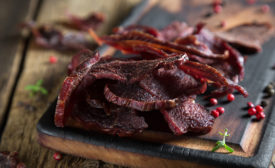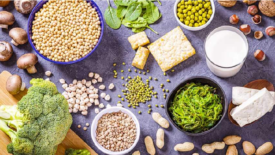Ingredients
Teton Taste Buds Hot Dogs offer lower sugar and sodium content than traditional product.
Read More
Category Report: Jerky
Convenience, transparency, and nutritional value drive strong jerky performance
Of the meat snack offerings on the market, jerky is king.
Read More
The Meat Snacks Report 2024
Demand for healthy protein drives the meat snack category
As consumer demand for on-the-go, convenient food options rises, meat snacks are showing themselves to be a one-stop-shop solution, giving consumers everything they want out of their food products.
Read More
American Meat Science Association celebrates 60th birthday
Nearly 2,300 meat scientists represent university research and teaching institutions, government and meat processing, packaging, equipment, ingredient and service companies in the United States and internationally.
Read More
Plant-based ingredient provider Woodland acquires Idan Foods
Acquisition addresses growing demand for outsourced product development.
Read More
The National Provisioner Podcast Episode 173: The future of plant-based protein
Cargill gives a fresh outlook on the plant-based protein category.
Read More
Tech Topics: Enzyme-based Binding Solutions
Enzyme-based binding solutions offer flexibility for protein product development
Ajinomoto Health & Nutrition North America senior scientist Ragya Kapoor shares insights on plant-based and ingredient innovations.
April 16, 2024
Tech Topics: Sodium Reduction
Suppliers meeting demand for salt with clean, flavorful ingredients
There is no silver-bullet ingredient that can achieve the desired sodium reductions.
Read More
Kerry offers new sodium reduction solution
Sodium plays a critical role in shaping the overall flavor of a snack seasoning.
Read More
Get our new eMagazine delivered to your inbox every month.
Stay in the know with The National Provisioner's comprehensive coverage of the meat and poultry processing industry.
SUBSCRIBE TODAY!Copyright ©2024. All Rights Reserved BNP Media.
Design, CMS, Hosting & Web Development :: ePublishing


.png?1647275041)








